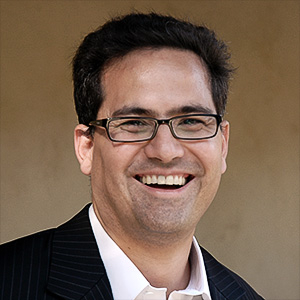Sean Flynn, Scripps College – Reducing Healthcare Costs
 On Scripps College Week: How do we cut the cost of health care in the U.S.?
On Scripps College Week: How do we cut the cost of health care in the U.S.?
Sean Flynn, professor of economics, has some solutions.
Sean Flynn is the author of the best-seller Economics for Dummies, which has now been translated into seven foreign languages, as well as the coauthor along with Campbell McConnell and Stanley Brue of the world’s best-selling college textbook, Economics: Principles, Problems, and Policies.
An avid martial artist, Sean is the defending U.S. National Aikido Forms Champion and has coached four of his students to U.S. national aikido titles.
Sean’s research specialties are behavioral economics and behavioral finance, with a focus on irrational investors.
A recurring commentator on NPR, FOX Business, and ABC News, Sean holds a B.A. in economics from the University of Southern California and a Ph.D. in economics from U.C. Berkeley, where he completed his dissertation under the supervision of 2001 Nobel Laureate George Akerlof.
Reducing Healthcare Costs
My research focuses on healthcare reform. Two simple policy changes would cut the cost of U.S. healthcare by 75 percent while delivering universal access, coverage for preexisting conditions, and an ironclad safety net.
The first is price tags. Right now, you can only get prices for things that are not covered by insurance—procedures like LASIK eye surgery and cosmetic surgery. For those procedures, providers are under constant pressure to cut costs and increase efficiency.
LASIK eye surgery, for example, cost $5000 per eyeball back in the 90s. Nowadays, you can get it for $500—with a Groupon.
If we had that level of competition throughout our healthcare system, prices would fall roughly 40 to 50 percent system-wide.
The other reform is a much better way to run health insurance that was pioneered by Whole Foods Markets and the State of Indiana. The employer or government sponsor pays the premium for an insurance policy but then gifts each participant an amount equal to the annual deductible each and every year.
Those annual gifts ensure 100% financially security, because participants can always pay their out of pocket costs. But it also gives them skin in the game because any money they don’t spend in a given year is theirs to keep and rolls over to the next year. This incentive prompts participants to slash wasteful spending. They get generics drugs instead of name brand drugs, they go to the urgent care for $100 instead of the ER for $800.
The result is 35% lower healthcare spending overall, just from fully funding people’s annual deductibles.
Combine that with price tags and U.S. healthcare costs fall by 75% nationwide, saving us over $2.4 trillion per year that we can spend on other vital priorities.



Price tags and skin in the game medical savings accounts are two out of I would say four of the key cost-saving reforms.
The other two are: 1) Long-term relationships with insurers as in life insurance, whole and universal policies. The consumer enjoys the freedom to lock in qualification for while they are healthy for known premium base for when they become a high risk patient. Conversely the insurer has an incentive to keep the patient healthy to lower their future costs. Both are invested in good health.
2) Comparison shopping transparency with the set up of a true national marketplace that includes experience feedback ratings for every provider and product. They could also do insurance shopping but few would want to.
Having these four legs on the stool eliminates the need for employers to be involved and removes the attachment of healthcare to employment.
That’s. Great idea. How do we make that happen??
We bind together. If you like this two-page outline for reform email Sean and he will forward it to me. -Ron Graf
https://drive.google.com/file/d/1C2HQExXbFhbSC6oNvyvKHbPs6piSD32a/view?usp=sharing
I agree with these ideas. I too think alot about healthcare reform. My approach as an actuary is start with these two proposals:
1) removing as many of the services that are not technically insurable from the health insurance policy. This includes services that are not both a) predictable and b) catastrophic in cost. This makes insurance policies truly insurance
2) For these non-insurable costs, we find other ways to “finance’ them, making sure that they are subject to free-market pricing so that feedback loops of supply/demand/price/quality are all present.
This construct is based on the fundemental flaw in healthcare today which is the insipid combination of fee-for-service combined with third party payment. Neither is bad by itself, but together they are toxic.
Regards
Fritz Busch
Consulting Actuary, Milliman
Fritz.Busch@Milliman.com